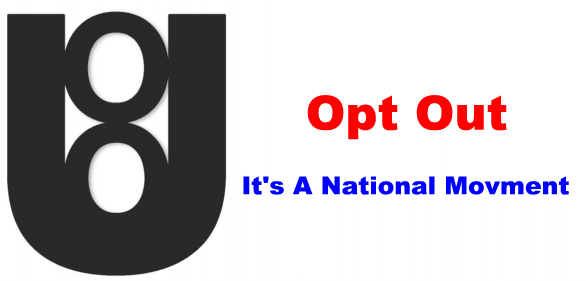Middle-class families lead opt-out movement
An examination of opt-out rates in the Lower Hudson Valley suggests that the anti-testing movement is being pushed almost exclusively by middle class families. Socioeconomic factors appear to be the driver of the movement — a culture of academic achievement at one end, poverty and a real need for better schools at the other. But if socioeconomics is the driver, politics is clearly sitting shotgun and holding the map.
More than 11,000 students refused to take the state-administered English language arts exams in Westchester, Rockland and Putnam counties last week. All told, roughly20 percent of students on average opted out of the exams in 41 of 54 districts that responded to data requests from The Journal News.
But the differences in participation, district to district, were stark. In nine Lower Hudson Valley districts, fewer than 5 percent of students refused to take the test.
Districts with a high test participation rate fell into one of two categories — they are either home to a large number of adults with advanced degrees and high household income, or where more than half the students are categorized by the state as "economically disadvantaged."
At the high end, in districts with fewer students opting out of tests (5 percent or less of eligible students), more than 65 percent of adults have a bachelor's degree or higher, and median annual household income levels are higher than $130,000. Of the districts with the lowest opt-out rates this year, seven were the top-performing school districts in state tests last year.
For instance, Bronxville, which had the lowest test refusal rate in the area —1.4 percent — also ranked No. 1 among districts in the region in 2014, with 71 percent of its students judged to be "proficient" in the English exams.
Well-heeled, well-schooled
The median household income in Bronxville is among the highest in the Lower Hudson Valley, $195,000. Among people 25 and older calling Bronxville home, 81 percent have at least a bachelor'sdegree, according to U.S. Census data.
Perhaps for the wealthiest families, tests are not something you decide to take, they're something on which you score well. According to Robert Schwartz, professor emeritus of practice in educational policy and administration at Harvard's Graduate School of Education, parents who believe that testing can help prepare a student for the college admission process will expect their children to succeed regardless of their opinions of the tests.
"Parents most focused on keeping their kids on track to get them into competitive colleges are not opting out of these tests," Schwartz said. "Parents who may not be as sophisticated about college education pressures and of the importance these tests play in preparing them could be more easily persuaded, especially when cheered on by teachers unions. The interests of the adults are getting in the way."
The stated purpose of the statewide tests is to level the playing field, to hold teachers, schools and school districts, regardless of economic advantage or academic achievement, accountable to the same benchmarks and parameters. This year, districts where more than 50 percent of students were categorized as "economically disadvantaged" reported low opt-out rates.
Only 1.5 percent of students in Mount Vernon refused the test, for example, and 5 percent in Greenburgh.
On the other hand, districts where more than than 30 percent of students refused to sit for tests have adults with lower levels of education, an average income for the area, and less than half a student body considered proficient.
In Mahopac, where 50 percent of eligible students opted out, only 36 percent of students were deemed proficient on the English exams last year. There, 43.5 percent of residents 25 and older have a bachelor's degree or higher. The median household income was $100,458 in 2013.
Across the Hudson River, the North Rockland school district had a 49 percent opt-out rate and only 33 percent of students were proficient in English language arts last year. In Pearl River, which had an opt-out rate of 38 percent, the median income was $84,951 in 2013, which mirrors the median for the county. There, 40 percent of adults 25 and older have a bachelor's degree or higher and student proficiency levels were at 49 percent on state English tests last year.
Political play
Beyond socioeconomics, the politicization of the issue has played a major role in driving the number of students opting out higher this year, though it's very difficult to come to any conclusions regarding the partisan nature of the debate.
The opposition to testing is not distinctly Republican or Democratic. Majority Republican Bronxville had some of the lowest opt-out numbers in the region, but of the nine towns with the lowest numbers of students refusing the test, eight have Democratic majorities.
Looking within the Democratic Party, lawyer and former Democratic gubernatorial candidate Zephyr Teachout, who launched a primary challenge in 2014, lent her voice to a robo-call urging parents to refuse the test. The New York State United Teachers union got into the game, too, encouraging its members to refuse the tests.
NYSUT President Karen Magee was vocal in encouraging parents to opt out. Some local teachers unions, including those in New Rochelle, Ramapo Central and Mahopac, adopted resolutions supporting the parents' rights to refuse the tests.
The fact that test results were tied directly to teacher evaluations became one major bone of contention, as was the hurried implementation of the associated Common Core standards, and the necessary time devoted to test preparation to the exclusion of creative elements of teaching. Under Gov. Andrew Cuomo's 2015 budget, adopted by the state Legislature, teachers deemed ineffective on two rounds of state tests could Common Core: Test refusal pushed by middle class families:

